Rulers whose legitimacy had been conferred upon them by the emperor, known as ‘client kings,’ occupied a unique position within the fractious constellation of warlords, high priests, dynasts and tribes that lay beyond the Roman Empire. For client kings, an association with the emperor to whom their title was owed formed an inalienable central tenant of their political identity. Many reflected this intersection between royal legitimacy and Roman imperialism through the production of coins that bore imperial portraits and iconography alongside images of local and dynastic significance.
 |
| 24mm Bronze coin struck by Agrippa I (Judea), c. AD 42/43 |
One issue, a 24mm bronze piece (RPC 1 679) shown above, was struck by the Judean client king Agrippa I at the mint in Caesarea Maritima between AD 42/43, and countermarked by imperial forces during the Jewish revolt of AD 66 (GIC 156). It is an extraordinary coin, whose obverse side contains the unusual and seemingly seditious image of the client kings Agrippa I and Herod of Chalchis crowning the emperor Claudius with laurel wreaths, but whose reverse side received a countermark in the shape of an imperial head from the Roman administration marking it as currency for Roman legions during the first Judean Revolt. Together, obverse image and countermark present a twenty-year narrative of Judean client kingship, which illuminates how the Herodian client kings defined their power and position in the empire from AD 42 until AD 66 (Kropp 2013: 378).
Agrippa I had received the kingdoms of Judea and Samaria, and the confirmation of land granted by his childhood friend Caligula, during an audience with the emperor Claudius in AD 42 (AJ. 18.237; 19.274). The agreement was a great success for Agrippa, who returned to Caesarea as the king of territories that surpassed those of every other Herodian king (Kropp 2013: 378). The enormity of the grant was a testament to Agrippa’s personal relationship with members of the Julio-Claudian family, which had began when Agrippa was sent to live at the palace at the age of six and became a close friend of the emperor Gaius. Agrippa had also been present during Gaius’ assassination, and afterwards helped Claudius to overcome a hostile senate and secure his succession to the throne (BJ. 2.206-17; Dio. 60.8.2). This bronze piece was produced in the same year at Caesarea to commemorate the ratification of the foedus (treaty) that formally conferred Agrippa’s new kingdom. An excerpt from the agreement, ‘Sworn treaty of the great king Agrippa to Caesar Augustus, the Senate and the Roman people, his friendship and alliance,’ appeared in two concentric circles of Greek text upon the reverse side, which wrap around an image of two clasped hands. This was a very Roman coin type, which had been used to signify concord and agreement on Roman coins since the first century BC, and it was a particularly appropriate illustration for the treaty concluded between Rome and the Judean king who would place imperial imagery upon his royal coinage with frequency throughout his reign (Burnett 1987: 27-28; Kropp 2013: 386).
The obverse side depicts the emperor Claudius, standing with his toga drawn above his head and a sacrificial patera in hand, flanked by Agrippa I and his cousin Herod of Chalkis, who crown him with laurel wreaths. In isolation, this image might be interpreted as a conventional scene of imperial glorification, in which the client kings take the place of the winged victories who crowned the emperor in imperial iconography, or the slave who stood behind the emperor to hold a laurel wreath above his head during the triumphal parade. This interpretation of the coin type would render it a highly unusual, but largely flattering, image of two client-kings heaping honours upon the Roman emperor to whom they owed their power.
When placed alongside the wording of a treaty conferring territories upon a client king, however, the image takes on a controversial subtext. This image of one ruler crowning another was uncomfortably similar to the act of crowning a client king that occurred in the Roman forum upon the successful conclusion of negotiations with the emperor (Kropp 2013: 387). As such, the coin-type could be interpreted as two client kings presenting themselves as the political forces behind the emperor’s position, rather than subordinate supporters of Roman power. It might even be construed as an allusion to the circumstances of Claudius’ succession, which literary evidence tells us was secured by Agrippa’s act of persuading the Praetorian Guard to choose Claudius as the next emperor during the bloodbath of Gaius’ assassination.
Agrippa would have been exposed to imperial imagery from an early age as a guest of the emperor in Rome, and this makes it very likely that he had an awareness of numismatic iconography and its political subtexts. This is confirmed by the fact that Agrippa produced royal issues copying the imperial coin types struck under Gaius for use by his subjects in Judea (Burnett 2014: 178). Further, representations of the ceremonial coronation of client kings had already appeared upon silver didrachms produced in the provincial mint at Caesarea during Caligula’s reign, which showed the emperor’s father Germanicus placing a crown upon the head of the Armenian king Artaxias (RPC 1 3629, shown below; discussion in Kropp 2013: 387). This was a ‘model’ coronation image, which maintained the status quo between imperial representative and foreign monarch by ensuring that Germanicus was taller than the client king he was crowning, and by the fact that Germanicus was very clearly placing a crown upon the king’s head.
 |
| Silver didrachm showing Germanicus crowning Artaxias |
 |
| Sebasteion relief |
By contrast, the coin struck by Agrippa does not observe these conventions- he, Herod and Claudius are of an equal height and stand alongside, rather than behind, the emperor, who wears ceremonial clothing in contrast to the fillets and cuirasses worn by the Herodian kings. The distinction between these images is marked, and as an image in which ‘crowner’ and ‘crowned’ appear to be reversed it has more in common with another controversial crowning scene, the image of Agrippina the Younger crowning her son Nero upon a relief at the Sebasteion Complex in Aphrodisias (shown left), than the model provided by Artaxias and Germanicus (Kropp 2013: 381-2). Much like Agrippa’s bronze coin, there in an ambiguity in the political relationship between the figures in the Sebasteion relief that lead the viewer to question whether Agrippina is honouring or crowning her son; Agrippina, draped and crowned with a cornucopia in one hand, stands at the same height as Nero and has placed the laurel wreath directly down upon her son’s head rather than symbolically holding it above. The fact that Agrippina and Nero are of equal stature casts doubt upon whether she has been cast in the role of the small winged victories that usually crown an emperor in imperial art, while the fact Nero’s laurel wreath is being placed squarely atop his head renders Agrippina’s act more analogous to a coronation scene than an honorific gesture. Together, these factors might suggest that Agrippina was the engineer of her son’s imperial power. Though Herod and Agrippa are holding their laurel wreaths vertically aloft, high above the emperor’s head, both the emperor and client kings are of an equivalent height and proportion in this scene. If we extrapolate the ‘subversive’ interpretation of the Sebasteion relief to Agrippa’s coin, it is possible to read it as a seditious image, in which the client kings present themselves as king-makers, conferring power and legitimacy to the emperor in Rome.
Could a client king make such a subversive statement- insinuations of political clout superior to that of the Roman emperor- on a medium as public and official as a coin? Provincial bronze issues were a highly local form of political expression, which did not stray far enough from their place of circulation to attract the attention of the emperor, who was honoured by other means, such as through the imperial cult. It would be unlikely for this coin to reach the imperial administration unless brought to its attention by the Roman procurator who was assigned to the neighbouring province of Syria and occasionally intervened in Judean affairs, and there is no evidence to suggest that it was. The intended ‘audience’ of this coin were Agrippa’s diverse and politically volatile subjects, some of whom agreed with Roman authority and participated in Roman spectacles such as gladiatorial games, and some who did not, but would read within the image evidence of Roman support for Agrippa’s royal position nonetheless (Galinsky 2008: 40; Kropp 2013: 386). Indeed, Agrippa’s royal authority would benefit from a public statement of sovereignty with Roman support expressed by a highly public and mobile medium. This image of Herod and Agrippa beside the emperor Claudius suggests a political relationship between emperor and king and insinuates they had a place within the hierarchy of imperial power, regardless of whether we consider it as honorific or subversive. In fact, the image of Herod and Agrippa honouring the emperor would communicate ideas of connection and support from the imperial centre as effectively as the image of the client kings crowning him, without the seditious subtexts that might sour relations with the emperor.
If we consider Agrippa’s propensity for imperial coin-types, his personal relationship with the Julio-Claudian emperors and desire to promote Roman support for his royal power and position in the imperial hierarchy as the central tenants of his political identity to our interpretation of this image, we can reach a middle-ground which considers this coin-type a highly unconventional, but not seditious, image. It is possible that provincial die-makers aware of Agrippa’s predisposition for imperial imagery selected the common motif of Victory figures honouring the emperor with laurel wreaths as the imperial motif best able to reflect the gratitude he owed the emperor for the extraordinary honour of a vast kingdom, and then adapted to include the three parties to the treaty- emperor, Agrippa and Herod- into the scene. This reappropriation of imperial imagery to reflect Agrippa’s political situation is mirrored by the reverse side of this issue, which used the clasped hands motif struck upon the roman coins of the late republic to signify agreement.
Could the countermark aid our efforts to interpret the attitude to imperial authority articulated by this coin, and offer a degree of clarification for Agrippa’s imperial loyalties, which are otherwise thrown into doubt?
This countermark is catalogued by Greek Imperial Countermarks as a male head in left facing profile within an oval punch, and it was struck in Judea during the reign of Agrippa I’s son Agrippa II (RPC 1 1992: 684; GIC 156; Mershorer.pl. 9.5a-b). It was placed upon the reverse side, in the centre of the clasped hand motif, leaving the crowning scene on the obverse side unobscured. The countermark was struck upon the coin in AD 66, the year in which ongoing tensions between the High Priests, bandits, army, aristocrats and Roman administration in Judea erupted into the first Judean revolt (Curran 2005: 70). This conflict produced a wave of new and reappropriated money. The rebels produced a new ‘Jewish’ silver coinage bearing traditional imagery and legends in paleo-Hebrew for use as temple-taxes, while the mint at Caesarea systematically countermarked worn issues, to prolong their time in circulation (Hendlin 2012: 125; Kanael 1963: 57). The three Roman legions stationed in Judea also required a supply of currency to serve as legionary pay and acceptable small change for the imperial coins spent by Roman soldiers (Howgego 1985: 30). Many of Agrippa I and II’s bronze coins and the procuratorial bronzes struck by Roman governor of the province received legionary countermarks, which took the form of the legion’s name or emblem (Howgego 1985: 30). The Legio X Fratensis, who travelled to Judea with Vespasian in AD 66, countermarked coins with the letters L, XF or LXF, and the image of dolphins, pigs, galleys and thunderbolts, all of which were associated with the Roman army or tenth legion (Madden 1866: 228).
We can surmise that at least one of this controversial bronze coin type produced by Agrippa was still in circulation during the first year of the Judean revolt, because one of the seven copies of this coin still extant was countermarked with a left-facing male head. Imperial head countermarks were a rarity among the Jewish symbols and legionary emblems that comprised the majority of countermarks struck during the first Judean revolt, and its identity is a matter of uncertainty- Greek Imperial Countermarks lists it among ‘male heads,’ rather than miscellaneous imperial portraits or heads of emperors which were usually had recognisable facial features, or could be identified by an abbreviated name, title or context, such as a recent imperial visit. Conversely, the catalogues of Jewish coins produced by Frederic Madden identifies the countermark as an ‘imperial head,’ but do not speculate upon the identity of the portrait, which is now too small and worn to offer any identifying features (Madden 1866: 136).
Though this lack of identifying marks precludes a positive identification of the person represented by the countermark, we are still able to speculate upon its origin and purpose. Throughout the Judean revolt, both the rebels and imperial forces scrambled to amass enough change for their armies to be paid and, in the legion’s case, receive acceptable small change in return from among the local coinage already circulating in Judea. When drawing from a wide pool of provincial issues, that included coin-types of very local and religious significance, the distinctly Roman imagery that had been struck by Agrippa I and later, by his son Agrippa II, would have made their coins particularly appropriate provincial substitutes for imperial bronze issues. Was the imperial head countermark a ‘banal’ image of the emperor struck by the imperial administration to place an imperial portrait head on a provincial coin that did not contain the customary obverse portrait? Was an imperial portrait all that was required to mark a coin already the correct weight and metal for Roman transactions as acceptable currency for the Romans buying and spending in Judea during the first revolt? Or was a ‘generic’ imperial portrait considered expedient- the result of the high turnover of emperors who ruled the empire in short succession during the year of the four emperors in AD 65? (Howgego 1985: 6)
Though is difficult to shed light on such an enigmatic portrait, we can use the certainty of an imperial authority behind the countermark to offer a new interpretation of the controversial crowning scene that appears upon Agrippa’s bronze coin. It is significant that the countermark has been placed upon the reverse side, leaving the crowning scene on the obverse unobscured. The fact the coin received a countermark authorising it for imperial use implies that the image was not an impediment to the coin being countermarked as Roman coinage. Indeed, the fact that the countermark was not placed upon the obverse suggests the workers and officials who oversaw imperial countermarking during the Jewish Revolt did not think it necessary to attempt to obscure it. This suggests they did not consider it an image in need of concealment, and as such, did not interpret its political motivations seditious or subversive. If we eliminate the idea that the coin expressed political sentiments that undermined the emperor’s power, one alternative remains- that the image of the Kings Agrippa I and Herod crowning the emperor with a laurel wreath was an honorific gesture, heaping exaltation and adulation on the emperor, through unconventional, but not seditious, image.
 |
This month’s blog post was written by Charlotte Mann. Charlotte completed her undergraduate degree at the University of Queensland, Australia, and has commenced her MA at Warwick. Her academic interests lie in the perception and representation of emperors within provincial coinage, imperial medallions and the Antonine emperors.
Bibliography
Amandry, M, Burnett, A and Ripolles, P (2005) Roman Provincial Coinage Volume 1 (London: British Museum Press).
Burnett, A (1987) ‘The coinage of King Agrippa I of Judaea’ in Mélanges de numismatique offerts à Pierre Bastien ed. H. Huvelin, M. Christol, G. Gautier (Wetteren: Editions NR) 25-38
Curran, J (2005) 'The Long Hesitation: Some Reflections on the Romans in Judaea’ in Greece & Rome v52 (2005) 70-98
Galinsky, K (2008) ‘The Augustan Programme Of Cultural Renewal And Herod’ in Herod and Augustus- Papers Presented at the IJS Conference, 21st-23rd June 2005 ed. D. Jacobson and N. Kokkinos (Brill: Leiden) 29-42
Hendlin, D (2012) ‘Jewish Coins of the Two Wars Aims and Method’ in Judaea and Rome In Coins 65 BCE – 135 CE Papers Presented at the International Conference Hosted by Spink, 13th – 14th September 2010 ed. D. Jacobson, D and N. Kokkinos (London: Spink) 123-144
Howgego, C (1985) Greek Imperial Countermarks: Studies in the Provincial Coinage of the Roman Empire (London: Royal Numismatic Society)
Kanael, B (1963) ‘Ancient Jewish Coins and Their Historical Importance’ in The Biblical Archaeologist v26 (1963) 37-62
Kropp, A (2013) ‘Crowning the Emperor an unorthodox image of Claudius, Agrippa I and Herod of Chalkis’ in Syria v90 (2013) 377-389)
Madden, F (1976) Coins of the Jews Vol 2 The International Numismata Orientalia (Hildesheim: Georg Olms Verlag)
Coin images courtesy of Classical Numismatic Group, Auction 103, Lot 592, and Numismatik Lanz München, Auction 94 lot 178.



 Clare Rowan
Clare Rowan

 Please wait - comments are loading
Please wait - comments are loading




 This month's blog was written by Denise Wilding, a PhD student on the EU-funded project
This month's blog was written by Denise Wilding, a PhD student on the EU-funded project 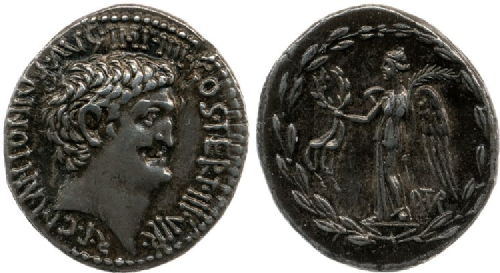








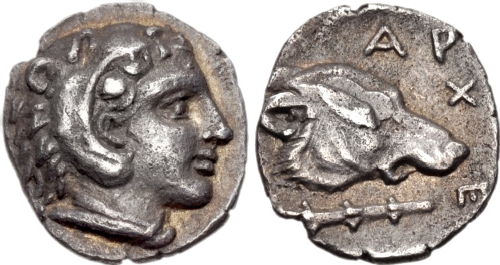

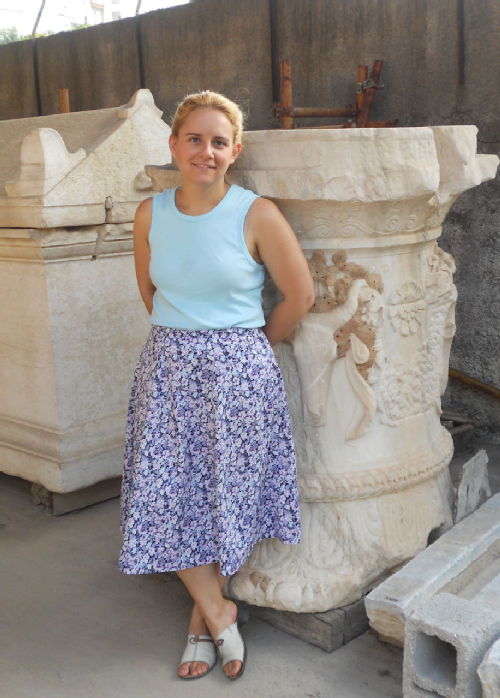

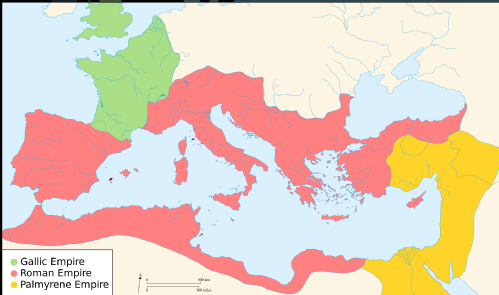








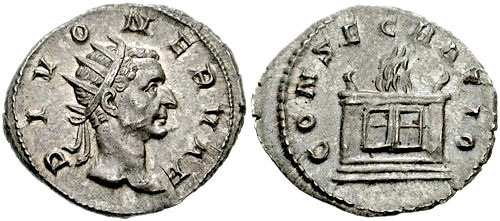


 Loading…
Loading…

